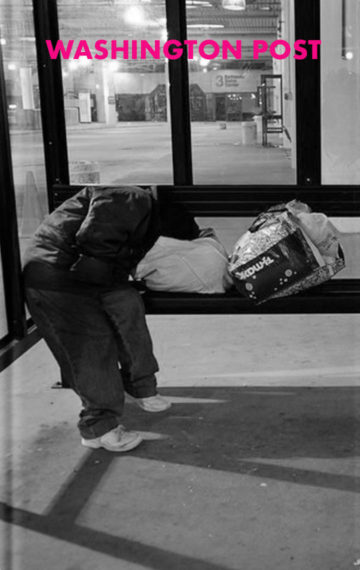As part of my work with people experiencing homelessness, I frequently speak to groups around Bethesda on the subject. I always ask the same question:
“How can we end people’s homelessness?”
And I pretty much invariably get the same response:
“We should help them get jobs!”
That answer, implicitly advocating for self-sufficiency, sounds reasonable . . . until you think about what it’s like to live on the street. That I consistently encounter this misconception makes me think there’s an easily resolved information gap between people working to solve homelessness and people in the general community.
Perhaps the easiest way I can fill that gap is by juxtaposing my own job-searching memories with what I see from my perch at Bethesda Cares of the life of someone living on a park bench:
My life: My networking emails and phone calls have borne fruit, and I have a job interview the next morning. After making sure the outfit I want to wear is clean, I set my alarm and hit the sack early so that I’ll be at the top of my game for the meeting. I wake at 2 a.m. thirsty; the thermostat is set too high, and I’m parched. I reset the heat and go to the kitchen for a glass of water. The cat hears me stirring and scratches at the door to be let out. I unlock it, then return to bed.
Client life: I’ve spent hours walking around tonight, trying to find a place to sleep. It’s too cold to sleep on my bench, so I tried for the basement of a parking garage, but the security guards threw me out. My throat’s really dry, but I don’t have any water. That’s okay, though, because drinking water makes me need a bathroom, and I don’t want to get arrested for public urination again. I heard about someone getting beaten up for sleeping on a subway platform, and all his stuff got stolen. Maybe I’ll just stay awake all night.
You see my point. I needed several things for a successful job search: networking and the devices on which to network, food and water, clean clothing and a bed behind a door that locks, in a room with heat. None of those are readily available to anyone enduring homelessness, making the notion of finding a job to earn the money to get an apartment an exercise in futility. Sleep deprivation directly impacts our physical and mental well-being. Dehydration damages your heart. Job-searching without Internet access, in today’s economy, isn’t a thing. So in finding solutions to homelessness, in light of these realities, jobs aren’t the answer.
What is, you ask?
Providing someone with housing is the answer to homelessness. In fact, it’s a complete solution to the problem. Moving someone into a home — a studio apartment, a room in a group house — creates the stability from which he can rebuild his life. It offers the foundation from which she can address her physical or mental illnesses. It allows for a place to store clean clothing, in advance of an upcoming job interview.
My perspective isn’t new. In fact, our partners at Community Solutions are the creators of Built for Zero, a rigorous nationwide campaign to house homeless clients as a proven best means of addressing someone’s homelessness.
In their words: “Homelessness is a solvable problem that has lost its sense of urgency.”
Montgomery County is making real progress in eradicating homelessness, by moving deliberately toward housing those suffering homelessness. (Last year, the county had about 980 homeless residents, compared with 1,100 in 2015.) But witnessing the sheer number of people living on our streets — in some cities, literally, thousands of them — makes the truth of Community Solutions’ statement pretty darned clear.
I’m concerned that today, with so many issues consuming our nation’s attention, the problem of solving homelessness will fall even lower on the public agenda. We all need to keep pushing forward on this issue, because solving homelessness hasn’t lost its urgency for the man with nowhere to sleep.
This piece originally appeared in The Washington Post, March 3, 2017
Photo Credit Washington Post
